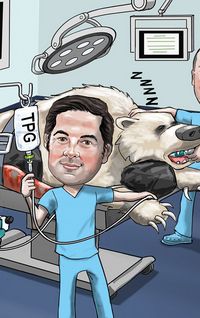Pedal to the metal
Global brand recognition and a strong equity story made Porsche the perfect IPO candidate. The lingering Covid-19 pandemic, Russia's invasion of Ukraine and resulting market volatility made for the most inhospitable conditions for a new issue in years. All things considered, 2022 was a terrible time to float a quality asset.
Yet Porsche completed the largest IPO in Europe since 2011 without a hint of a misfire.
“The decision by the VW supervisory board to move ahead with the preparation of a potential IPO coincided with the first day of the conflict in Ukraine. Of course we had to monitor the market environment closely to identify the right timing for the transaction. But VW was convinced on the rationale to take the company independent," said Bjoern Scheib, head of investor relations at Porsche. "To successfully accomplish the IPO in this challenging environment and at this price, it really underlined the quality and the demand for an asset like Porsche in the market.”
It wasn't easy with Porsche adopting a complicated dual-class share structure, having a limited free-float and adding to corporate governance concerns with CEO Oliver Blume adding leadership of parent Volkswagen to his mandate midway through the IPO process.
Significant time was spent de-risking the deal, with cornerstone investors included and the valuation determined well in advance. The price range represented a narrow €70bn–€75bn market capitalisation for the carmaker, giving it a valuation closer to luxury goods than auto manufacturers, without trying to even get close to Ferrari's unique multiples.
A retail offer was unusually broad allowing investors in six countries to participate, capitalising on the brand power of Porsche to add 170,000 names to the shareholder register.
The deal also saw the return of in-person roadshows with management travelling to the US to sell the story.
"It required a lot of hard work from management. They did five roadshows with more than 140 investor meetings conducted in total and saw more than 1,000 investors on the road, answering more than 3,000 questions," said Scheib. "Obviously it really paid off.”
Covered at the top of the range within 90 minutes – one banker said it was the biggest first-day demand he'd seen in 25 years – final order volume was in the tens of billions, coming from around 40 countries and every continent except Antarctica.
A massive 650 lines in the book meant more than half were not allocated shares, including a lot of hedge funds which in total received less than 10% of the deal.
A horrid market meant the stock struggled at first and needed stabilisation for the first three days, but it then performed handsomely, driving nearly 35% above pricing within two months.
To see the digital version of this report, please click here
To purchase printed copies or a PDF of this report, please email leonie.welss@lseg.com





